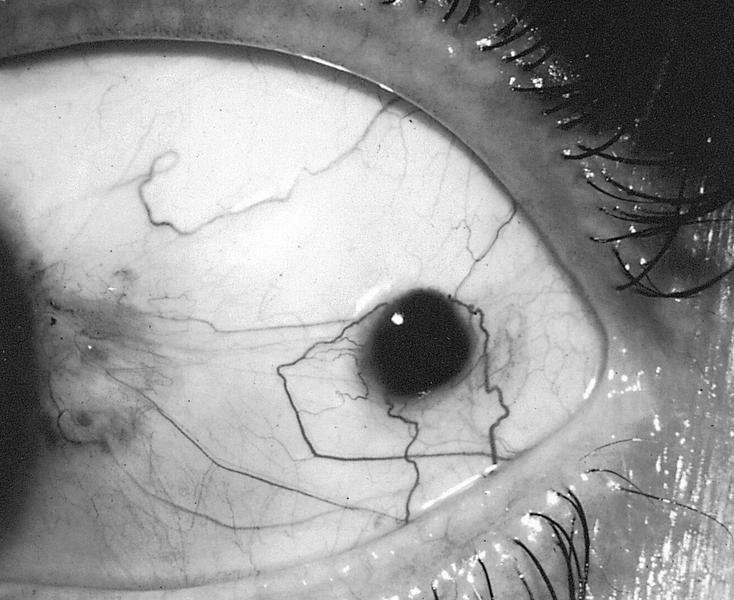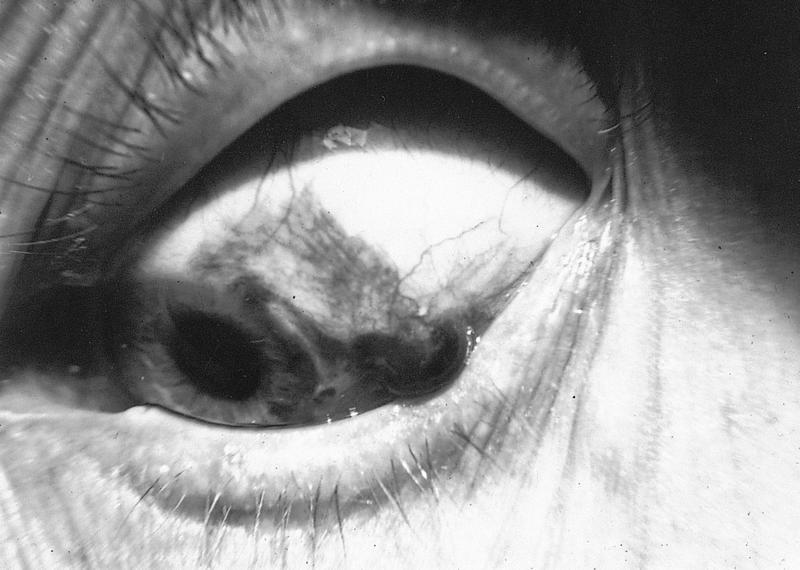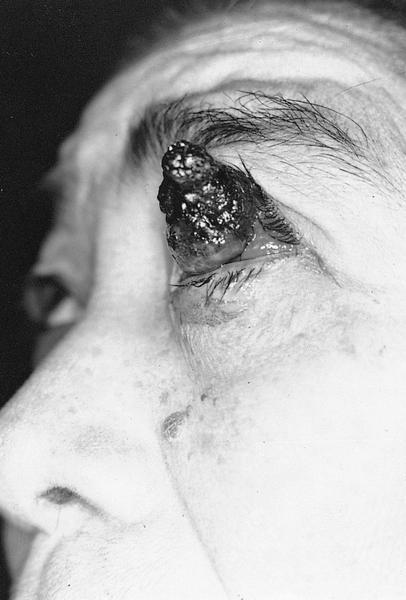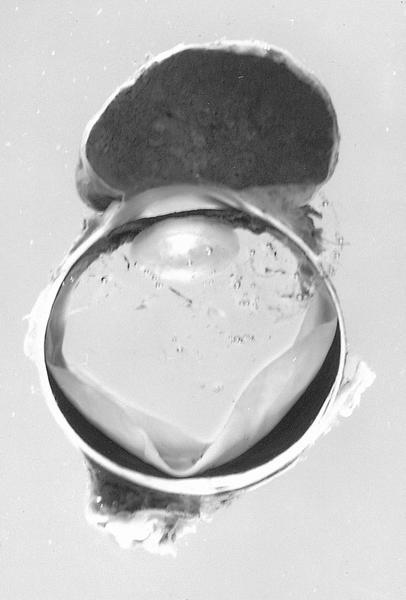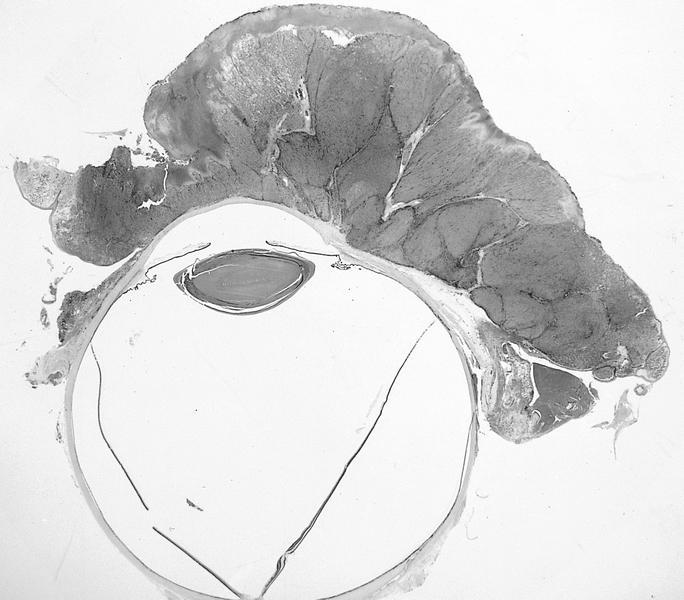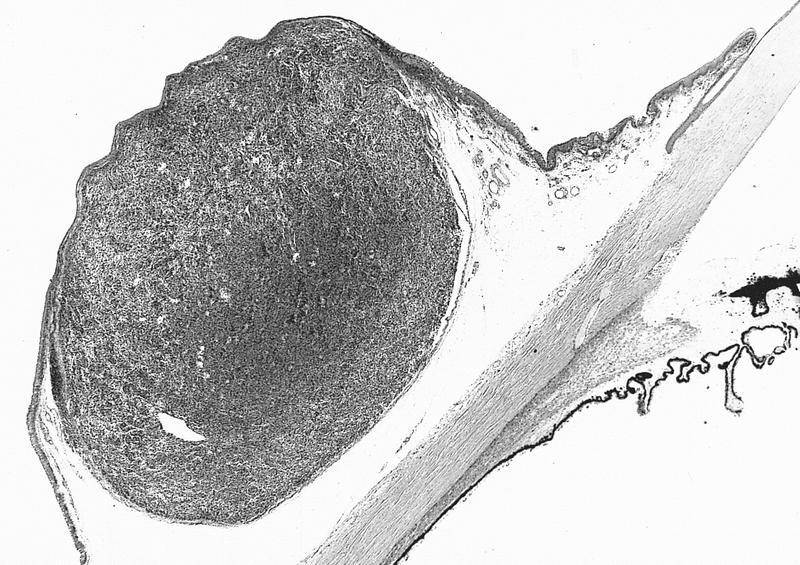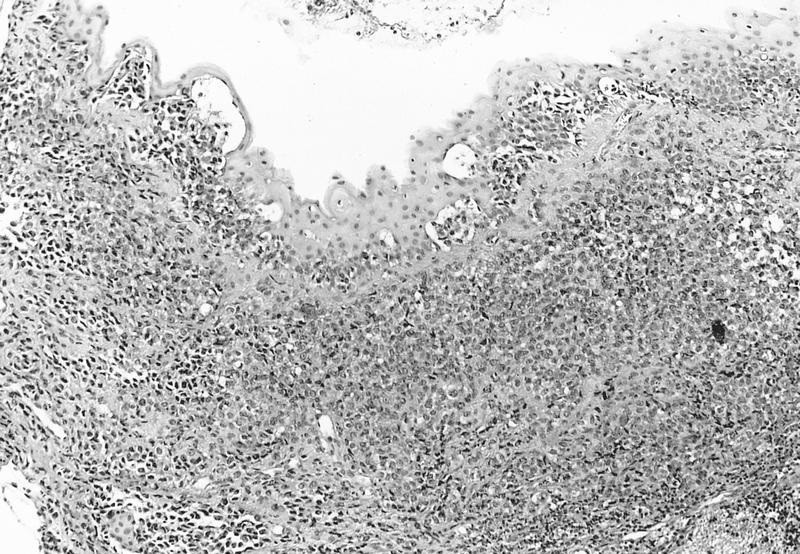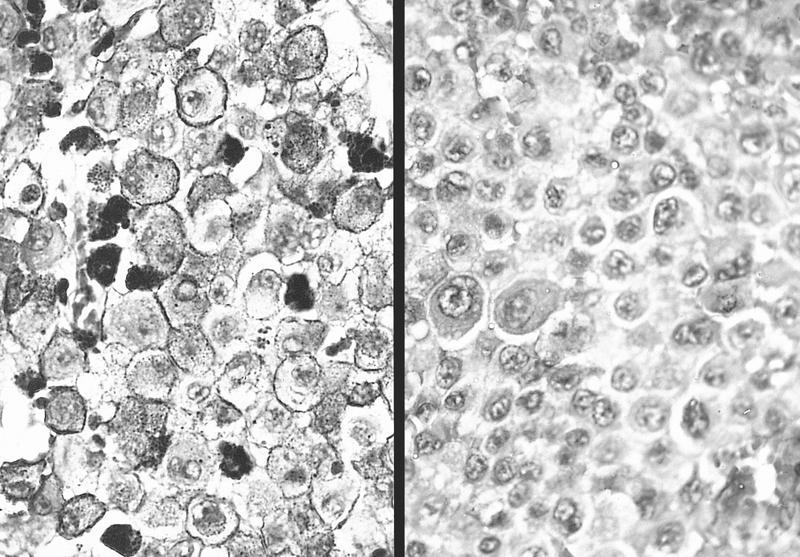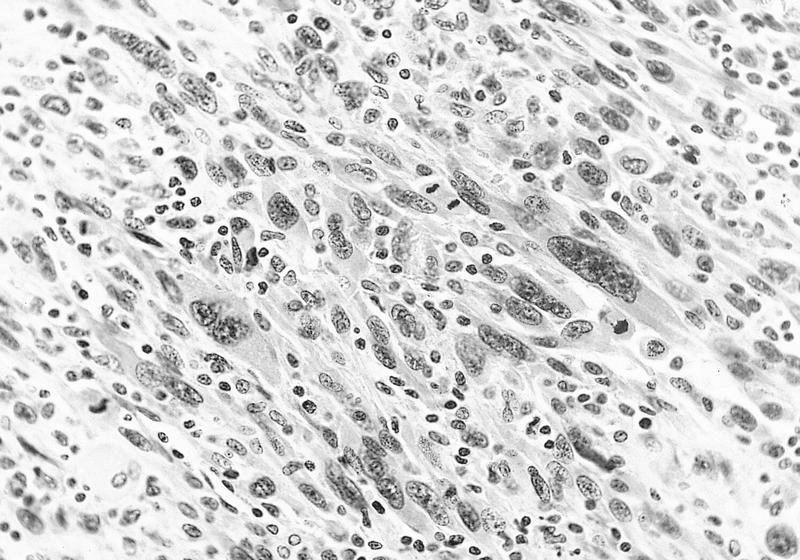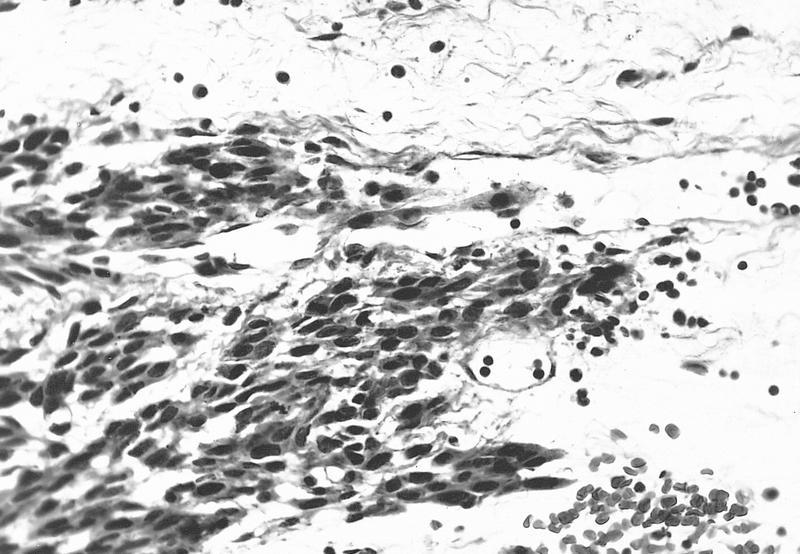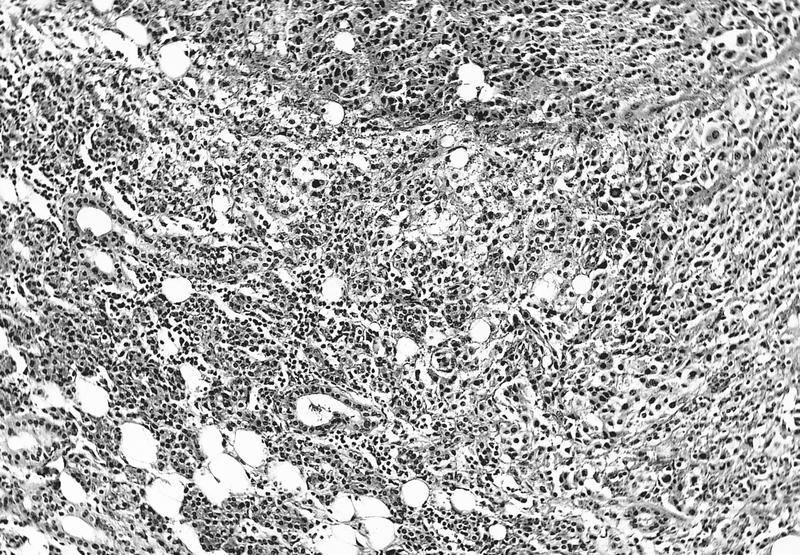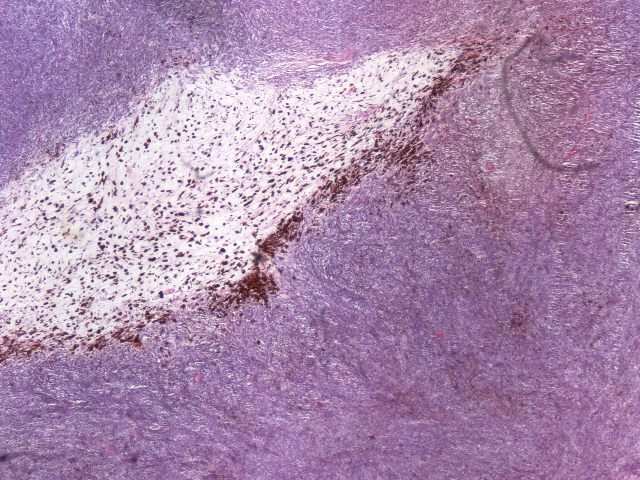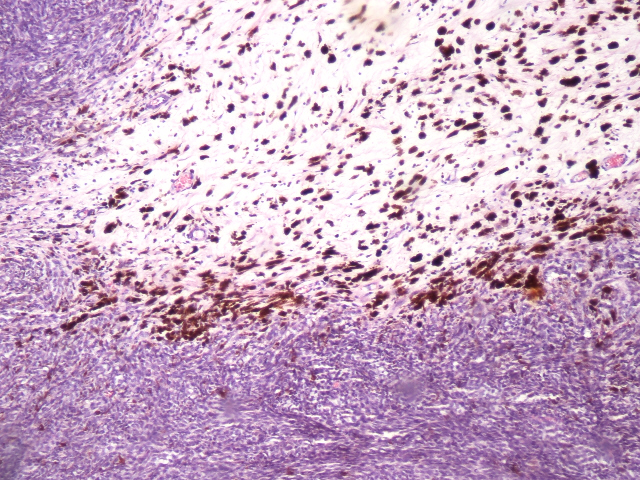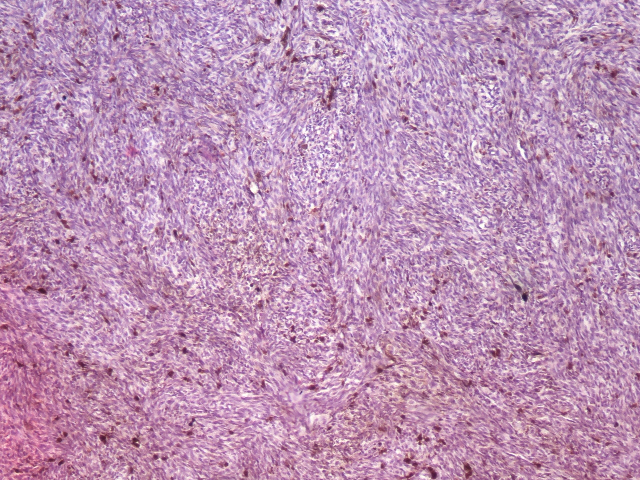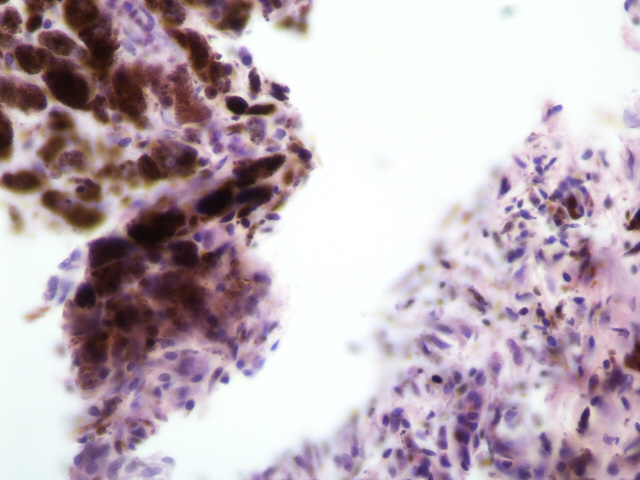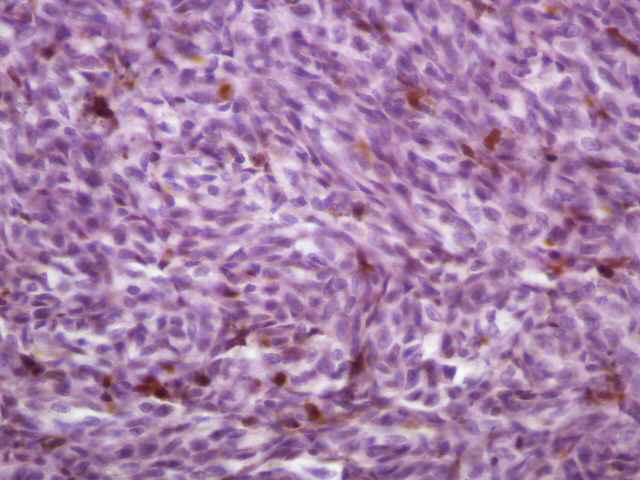Table of Contents
Definition / general | Epidemiology | Prognostic factors | Clinical features | Case reports | Treatment | Clinical images | Gross description | Gross images | Whole mount images | Microscopic (histologic) description | Microscopic (histologic) images | Cytology images | Positive stains | Negative stains | Differential diagnosis | Additional referencesCite this page: Pernick N. Melanoma-conjunctiva. PathologyOutlines.com website. https://www.pathologyoutlines.com/topic/eyeconjmelanoma.html. Accessed April 3rd, 2025.
Definition / general
- #2 malignancy of conjunctiva after squamous cell carcinoma
- 2% of ocular malignancies, 5% of ocular melanomas
- Due to primary acquired melanosis, nevi (20 - 30%) or no apparent precursor lesion (18 - 25%)
- Usually fair complexioned individuals age 40+ years
- Be wary of diagnosis in children as it is very rare (J Pediatr Ophthalmol Strabismus 2007;44:277)
Epidemiology
- 0.012 cases/100K in US, 0.024/100K in Sweden, 0.052/100K in Denmark
- Rare in blacks
Prognostic factors
- Excellent if small, localized and bulbar
- Intermediate if diffuse and bulbar
- Poor prognostic factors:
- Fornix, caruncle, plica semilunaris or palpebral conjunctiva
- Tumor thickness > 4 mm
- Epithelioid cells or 5+ mitotic figures / 10 HPF (Br J Ophthalmol 1994;78:252)
- Prognosis not related to nature of initial lesion, although acquired melanosis cases are often multicentric
Clinical features
- Metastases to parotid or submandibular lymph nodes, but uncommon if primary tumor less than 1.5 cm
- May extend directly into orbit, eyelids, sinuses, anterior chamber (Graefes Arch Clin Exp Ophthalmol 2007;245:431)
- Often recurs locally
- Overall mortality 25% - 32% (J Fr Ophtalmol 1999;22:315)
Case reports
- 32 year old man with amelanotic tumor (Cutis 2006;77:377)
- 61 year old woman with prior primary acquired melanosis (University of Iown Health Care: Conjunctival Melanoma arising from PAM [Accessed 30 April 2018])
- 79 year old man with metastasis to parotid gland (Br J Ophthalmol 2003;87:1428)
Treatment
- Complete excision or radical surgery, depending on extent of disease
- Cryotherapy for margins and base
- Also topical mitomycin C
- Recommended to avoid incisional biopsy (Trans Am Ophthalmol Soc 2000;98:471)
Clinical images
Gross description
- Vascular, pigmented, nodular
Microscopic (histologic) description
- Invasion of atypical melanocytes into epithelial connective tissue
- Usually thin surface epithelium
- Bizarre polygonal epithelioid cells with eosinophilic cytoplasm, large atypical nuclei, prominent eosinophilic nuclei
- Also spindle cells, smaller cells, balloon cells containing lipid
- Often lymphocytes at base or tumor margins
- Report: presence of primary acquired melanosis or nevi, presence of pagetoid spread at edge of excision, atypical intraepithelial melanocytes, nevus cells; also tumor thickness from surface of lesion to deepest margin using calibrated micrometer
Microscopic (histologic) images
Differential diagnosis
- Extension of extraocular melanoma
- Metastatic melanoma: clinical history of melanoma, more circumscribed, no intraepithelial tumor
- Spindle cell carcinoma




